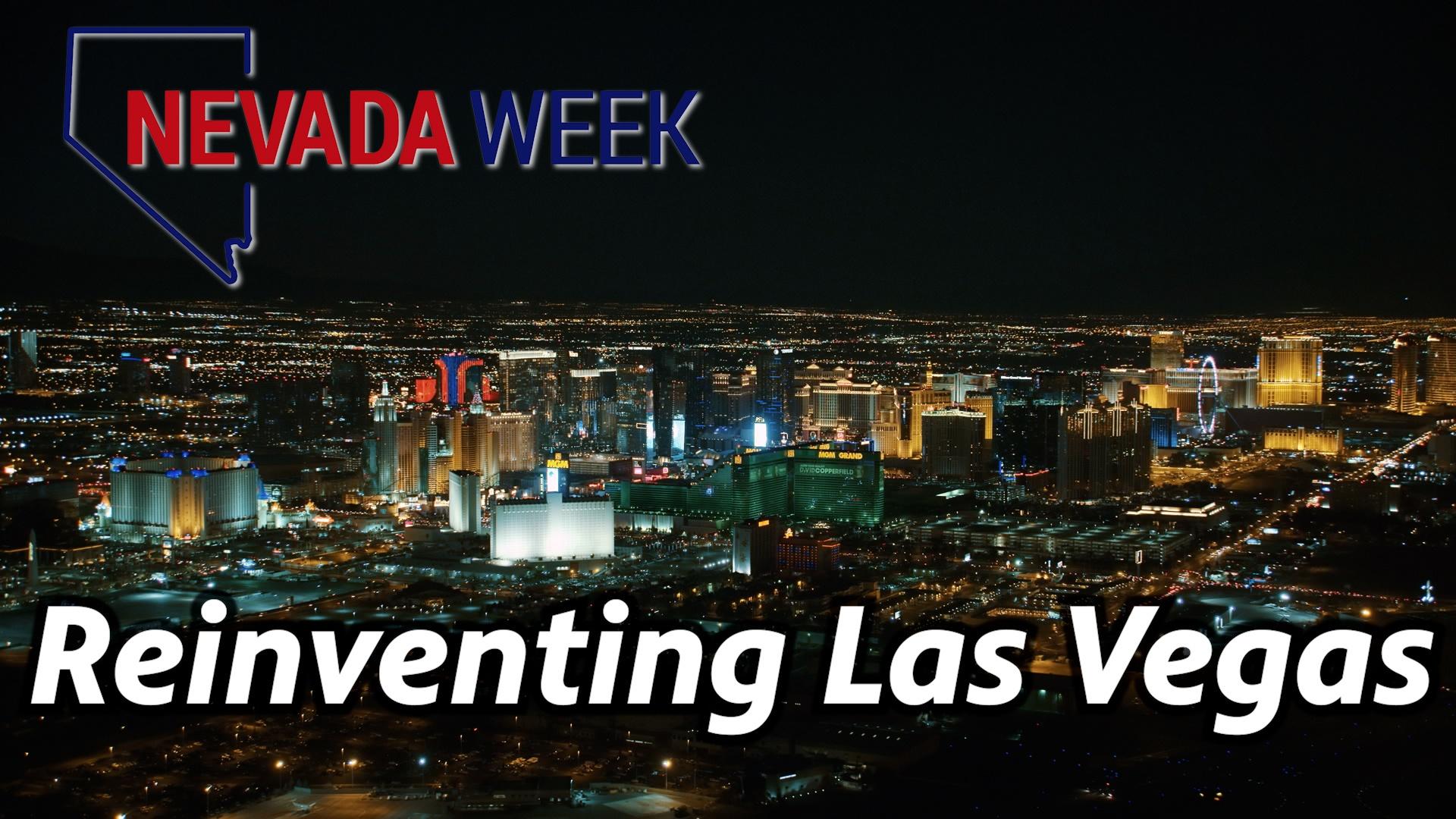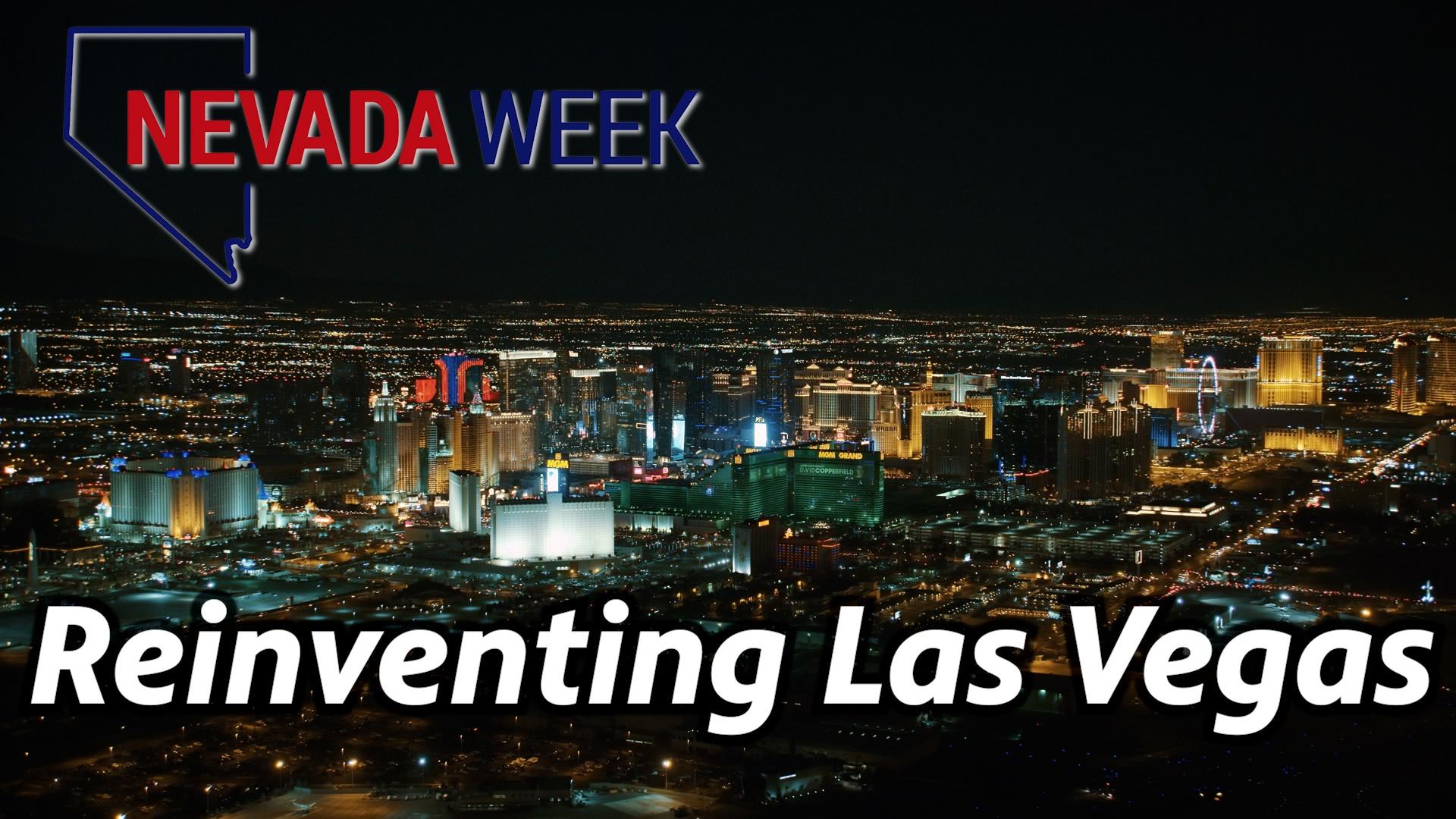Reinventing Las Vegas | Nevada Week



SEASON 4: EPISODE 19 | Airdate: 11/19/2021
The city of Las Vegas started its life in 1905, and since then, it has soared to become one of the top travel destinations. Since its early days, Las Vegas has been known for both reinventing itself and weathering economic and cultural storms. But what does the city’s unique history teach us about its present and future as it makes its way out of the economic downturn caused by the pandemic?
Former Senator Richard Bryan told Nevada Week that there are valuable lessons to be learned from history. He said that Southern Nevada still struggles with the fact that it is still a one-industry town, which means it gets hurt worse during economic downturns than other cities.
He said, in the past, innovations like the loose divorce laws of the 20s and 30s allowed Las Vegas to create an industry around travel.
Bryan said one of the key elements to Las Vegas’ ability to reinvent itself is the fact that it is a city that has combined new, dynamic people with the experience of the people who founded the city. He said there is little resistance to having new people be part of and build the community. He said if people were talented they would get plugged into the community to help move it forward.
One of the most serious challenges our city could face in its progression is water.
Chair of the City of Las Vegas Historic Preservation Commission, Bob Stoldal, agreed. He noted that it is only going to get hotter and drier in the Las Vegas Valley. He said we need some innovative ideas and solutions for the water situation.
Ironically enough, it was water that brought people to Las Vegas in the first place. The water from the springs would bubble up from the ground, said UNLV associate professor of history Michael Green. The people living here managed to use all of that water.
Lake Mead now provides water for the city, but that is at its lowest level since it was first filled. Stoldal noted Hoover Dam was one of the first tourist attractions in Southern Nevada. People came to see the dam, which created the need for restaurants and hotels.
Stoldal said the new industry that is driving Las Vegas today is sports, but he said there were only two empty properties left on the Strip, and interestingly, they were where the first two hotels on the Strip originally stood – El Rancho Vegas and the Last Frontier.
Green said Las Vegas is like a laboratory. With so many people coming here from around the country, bringing their own ideas, biases and prejudices, the city is seen as a bellwether both politically and socially because it is such a rich mix of people.
Jarmilla McMillian-Arnold has lived in Las Vegas since she was 9 years old and has seen it grow and change dramatically. Her father, James McMillan, was the first African American dentist in the city. He was also a devoted civil rights leader in the city.
McMillan-Arnold sees a bright future for Las Vegas but she wonders what has happened to the Historic Westside. She said many of the buildings in the area have been razed leaving nothing but empty land. As the city moves out of the pandemic, she would like to see money and resources devoted to improving that area of the community.
